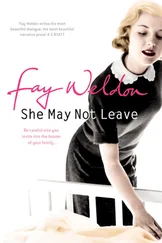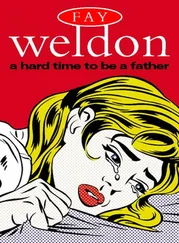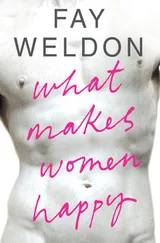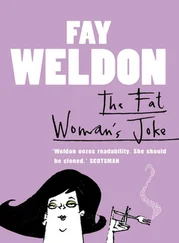My mother’s parents, at the turn of the century, ran to a cook and a maid who lived in, and had one half-day off a week. They were certainly not out littering the streets, buying shoes or overcrowding public transport.
In the East End of London, before bombs razed so much of it during two world wars, and the planners got busy with their theories, nearly everyone lived within walking distance of work. And how they worked! In 1901, we had 75,000 boys under fourteen in the factory workforce, and nearly as many girls. The school leaving age was thirteen and child labour was common in spite of it, and it was normal for women to work before they had families. But not after, if they could help it. In the civil service and in teaching, what was called the Marriage Bar meant a woman had to give up her employment – in blouse and skirt, of course – when she got married. Otherwise who would run the nation’s homes? A whole lot of women just got married secretly, of course, and failed to tell their employers.
Halfway through the century, by the time I was being taught by Professor Knox, though the Marriage Bar was gone, it was certainly assumed that an educated girl chose between a personal life and a career. Now it is assumed that somehow, what with the washing machine, the microwave, the vacuum cleaner, and this strange thing called childcare, which is another woman looking after her child for less than the mother earns, she will be able to manage both. And she can, just about, and often wants to, and often has to. And it can be hard. We have paid a heavy price for our emancipation, but more of that later.
And when I say people worked hard then, believe me they work harder now. My mother views with horror today’s average working week of forty-eight hours – and middle management works sometimes sixty or seventy, plus the journey to and from work – saying that even before World War II the attempt was to get the figure down to thirty-five. And that when in the late fifties she worked as a porter on London’s Underground – the winters were cold and staff were issued with heavy greatcoats, for which she was thankful – even then the staff worked only a forty-hour week. What happened? And as for part-time work – the kind women with children so often do – this is usually an employer’s definition and doesn’t necessarily mean shorter hours, just that the employee works without holiday or sick pay and has no statutory rights. I know ‘part-time’ college lecturers who work longer hours than the full-time staff, but for less money, and are still grateful. It’s that or nothing.
Of course things have improved. They must have. Our life expectancy is greatly increased. My mother’s life expectancy when she was born was fifty-two years. My father’s was forty-seven. A girl child born today can expect to get to eighty-one, a boy child seventy-six. The gender gap in this respect has neither closed nor narrowed. Women are born to live longer on average than men, in the human species as in most others. At the beginning of the century one hundred and sixty males per million did away with themselves: the figure for women was forty-eight. Now it’s down to one hundred and four males and thirty females. Woman is not so given to despair, it seems, as Man, and though the totals drop, thank God, they stay pretty much in the same gender proportion, three times fewer women than men. We both mostly do away with ourselves when we’re old and lonely. We were not bred for loneliness, though the contemporary world forces too many of us into it. The government plans to build 4.4 million new housing units, to house those expected to live alone in the next decade, and that figure rises steadily. As Patricia Morgan at the Institute of Economic Affairs points out, in a booklet on the fragmentation of the family, men’s disengagement from families is of immense and fundamental significance for public order and economic productivity. This is something which is only just beginning to be acknowledged – as we blithely head for a situation in which, by the year 2016, fifty-four percent of men between thirty and thirty-four will be on their own.
So pity the poor male as well as pity the poor government. One’s anxiety on their behalf has less to do with girls doing so much better at school exams than boys, which they so famously do, but with changes in society which make it difficult for us all to do what comes naturally. That is, to fall in love, marry, and live happily ever after in domestic tranquillity, even though we prefer now to do this serially. The late twentieth century is wreaking havoc with our aspirations to life, liberty and the pursuit of happiness. May we please have our Ministry for Human Happiness? Or if the government really wants to be useful, and preserve the marriage tie and so forth, thus saving itself large chunks of the £800 thousand million annual benefit budget spent mopping up the mayhem left by divorce, it could institute official stigma-free dating agencies, and set about arranging sensible marriages. The self-help system seems to be breaking down. And the steadiest citizen is the married citizen, and the one most pleasing to the State, tied down and sobered by kids and mortgage obligations.
My mother and I, of course, both have to thank the twentieth century for our continued existence. Let me rephrase that. Were it not for medical advances we would neither have seen so much of it. I would have been dead twice, once for lack of antibiotics, once for lack of plausible surgery. So would she. I would have three surviving children, not four. One would not have survived birth. Mind you, were it not for the advent of contraception, I might have ended up having ten. When Marie Stopes worked in London’s East End at the beginning of the century there were women around who had survived twenty children or more: but the normal fate of the married woman was to die young from repeated childbirth, contraception being both illegal and seen as immoral. For every child she carried, Stopes estimated, a woman’s chance of dying in childbirth increased by fifty percent. If the marriage rate then was a mere one in three I am not surprised. Marriage might have meant status and children, and even, in George Bernard Shaw’s phrase, been a meal ticket for life for women, but was still too often a death sentence, especially amongst the poor. Things are better now: infant and maternal mortality is way, way down to almost nothing – from over one in ten in 1900 to less that four per thousand now – but with improved health, prosperity, the advent of contraception and women’s control of her own fertility, comes a new set of problems. So it goes.
My mother at the age of five, when first required to go to the little Montessori school around the corner, set up such a wail that my grandfather, a novelist, came down the stairs in his silk dressing gown, waving his ivory cigarette holder and said what can be the matter with little Margaret? To which the reply came she doesn’t want to go to school. ‘Do you want to go to school, Margaret?’ he asked, and my mother replied no, though she knew even then, she told me, that it was a life decision and she’d made the wrong one. My grandfather said, ‘Don’t send her then,’ and went upstairs again, and they didn’t. She stayed at home and read books and by the age of twenty was writing novels with her father.
Education for my mother and myself was for its own sake. It was not training, as it is now, for the adult world of work. The motive behind the education acts of the nineteenth century, which made school compulsory, was not by any means purely philanthropic: rather it was to accustom the children of an agrarian society to industrial ways, so by the time they left school they’d have got into the habit of turning up at the factory even when it was raining and cold, they felt poorly, or their shoes were wet and it was Monday morning. Monday was always a bad day for turning up at work. And the truant officers of the new compulsory schools, the morning and afternoon register, and the sick note required to prove illness, did indeed quickly train the new generation to daily work in the factories, bother reading and writing.
Читать дальше












